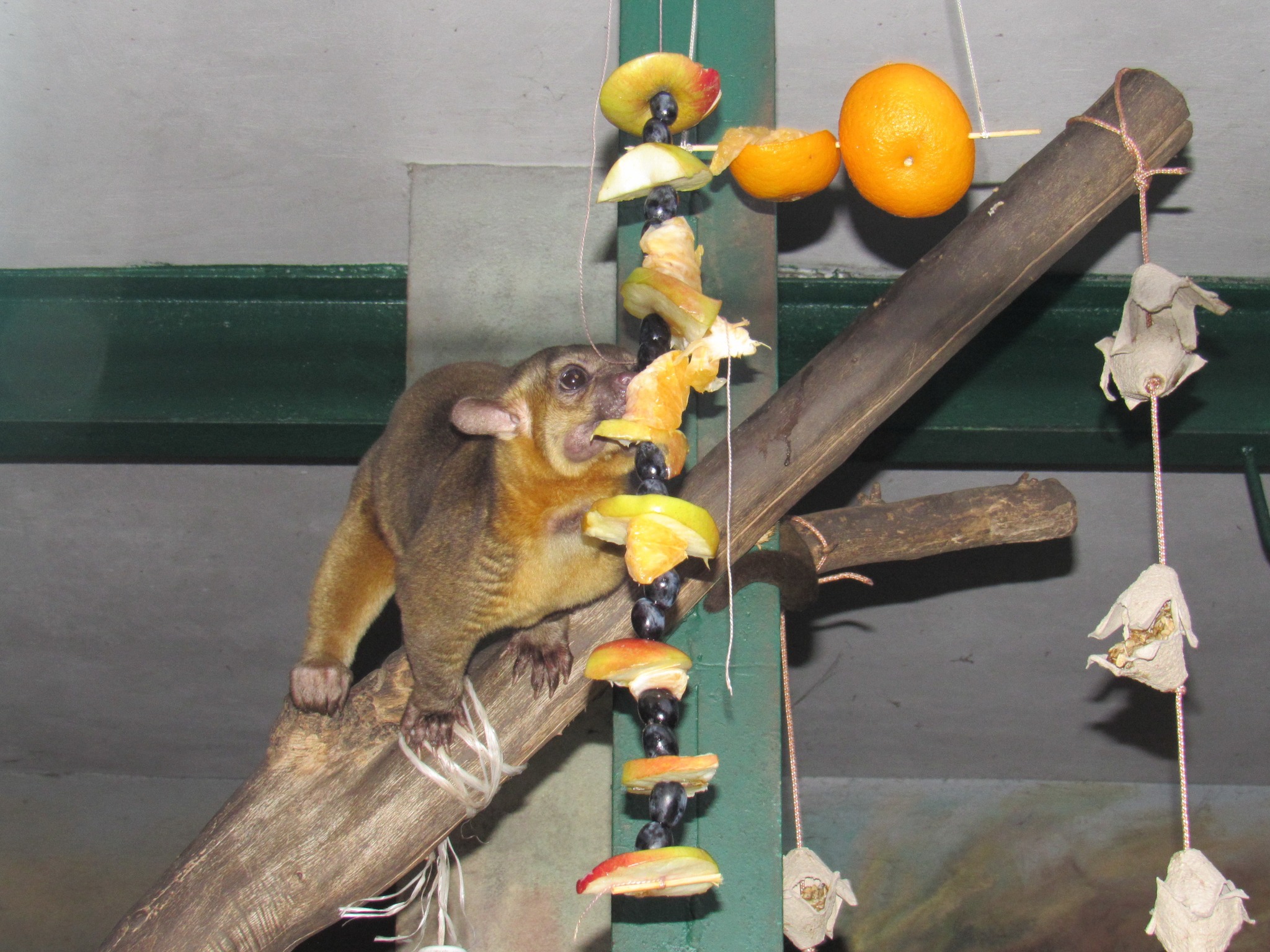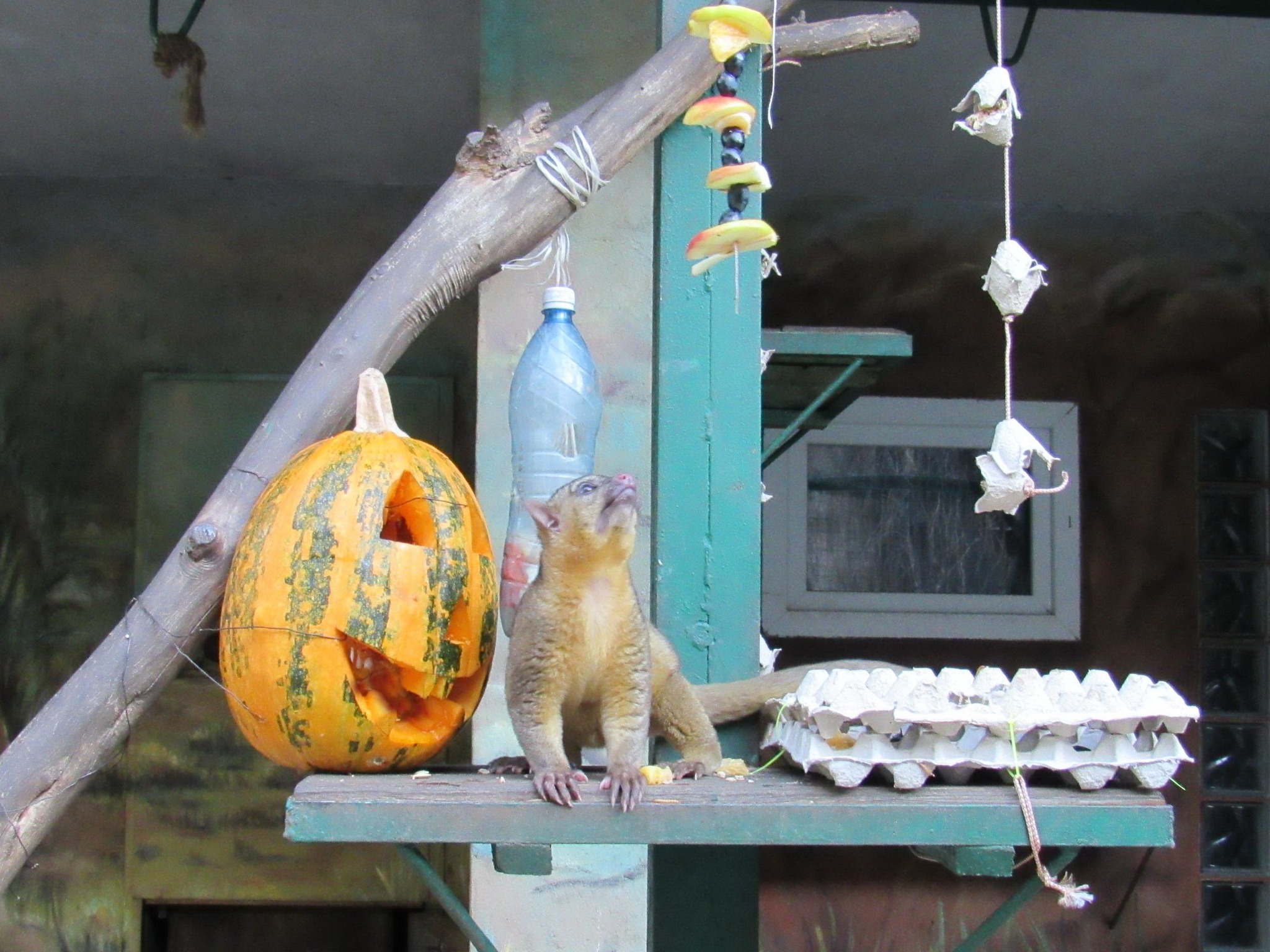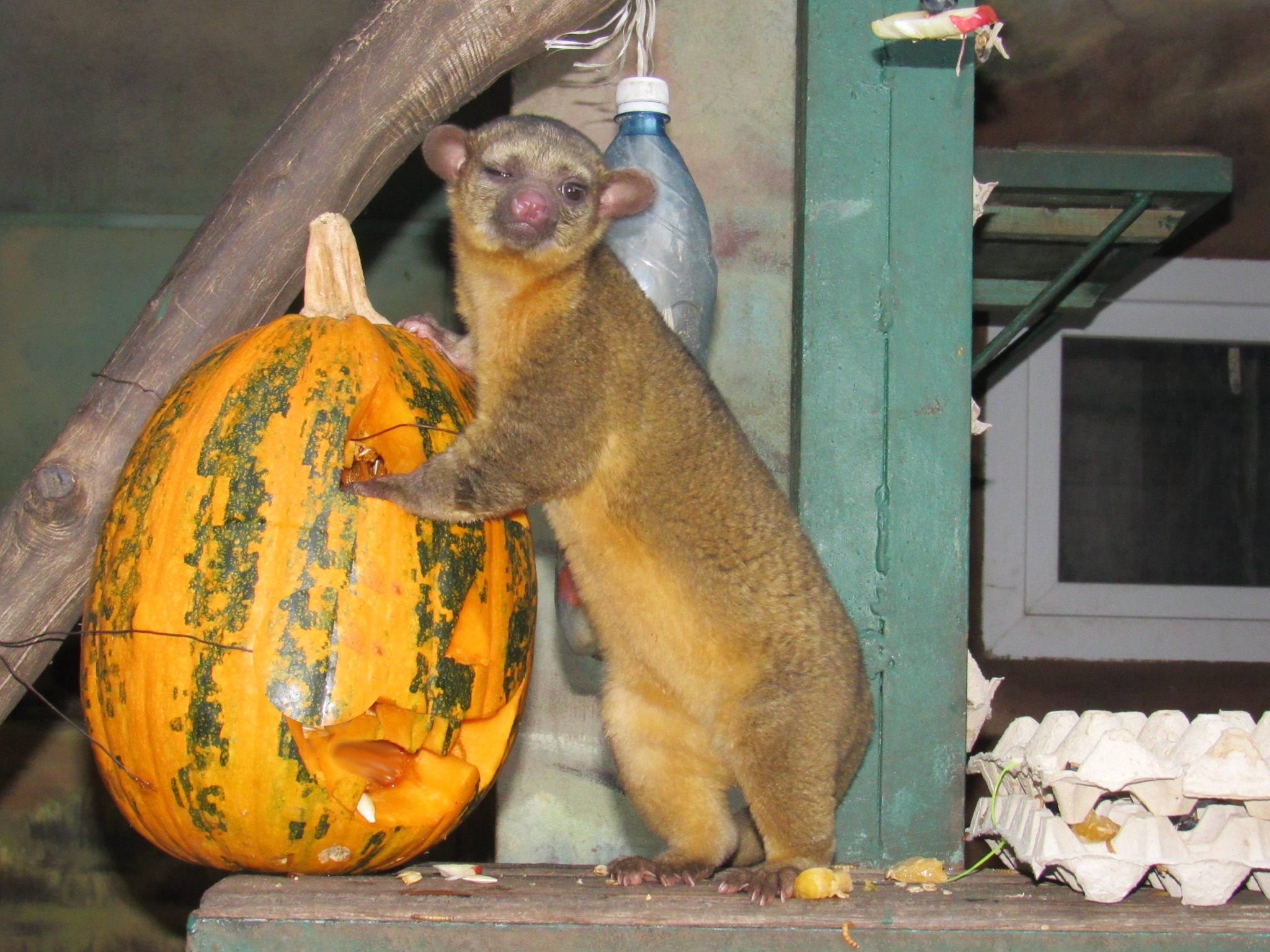In the evening, before the zoo closes, in the warm autumn twilight (especially on the eve of the mystical Halloween), our visitors can look out and see an amazing animal – a kinkajou.
Kinkajou (Potos flavus) is an omnivorous mammal from the raccoon family, an animal characterized by a nocturnal and twilight lifestyle, so it is almost impossible to see it during the day, neither in the zoo nor in its homeland, in Central and South America. This small animal, about the size of a domestic cat, has many figurative names that reflect its habits or lifestyle. It is called a "night wanderer" and a "night monkey" for its active "walks" at night in search of food and for its almost ape-like agility in moving through trees and its prehensile tail, similar to that of some primates. The name "honey bear" was given to the kinkajou for its bear-like face with round ears, like a real bear has, and also for the fact that the little animal is very fond of honey and other sweet foods. In nature, in tropical forests, kinkajou feeds mainly on fruits, flowers, leaves, insects, small vertebrates, and bird eggs can supplement their diet. The animal has a long, up to 20 cm long tongue, which helps it extract honey and nectar. In addition, not only the sticky tail, but also the structure of the paws helps the animal to be extremely agile in its search for food. Its hind legs are longer than its front legs and can turn 180 degrees at the ankles. This allows it to hang on its hind legs from a branch, clinging to it with sharp claws. Kinkajou’s front paws are not inferior to monkey's in dexterity.
In the photo, which we bring to your attention, the animals that live in Mykolaiv Zoo are enjoying the goodies that were offered to them during enrichment of the habitat of these animals. A variety of fruits, honey, boiled eggs, boiled chicken meat, specially grown insect larvae were placed in feeders-"puzzles" made of pumpkin, ecological feeders made of secondary raw materials, packaging. The most active was a female named Alya (she is the one you see in most of the photos). We also have a male Vitalya and children of Alya and Vitalya: Velur and Baika (the animals were given such names for a reason, the kinkajou fur is very soft, really "velor" or "baize").
You can find the enclosure of Alya, Vitalya and their family in the complex of enclosures for small tropical carnivores (pictured). But we advise you to be patient if you want to see these interesting animals, and remember that kinkajous only start coming out of the shelter where they stay during the day at dusk, shortly before the zoo closes and only in the warm period of the year.
Hurry up to see the unusual "night monkeys", "honey bears", and in fact relatives of the raccoon – the kinkajou!





